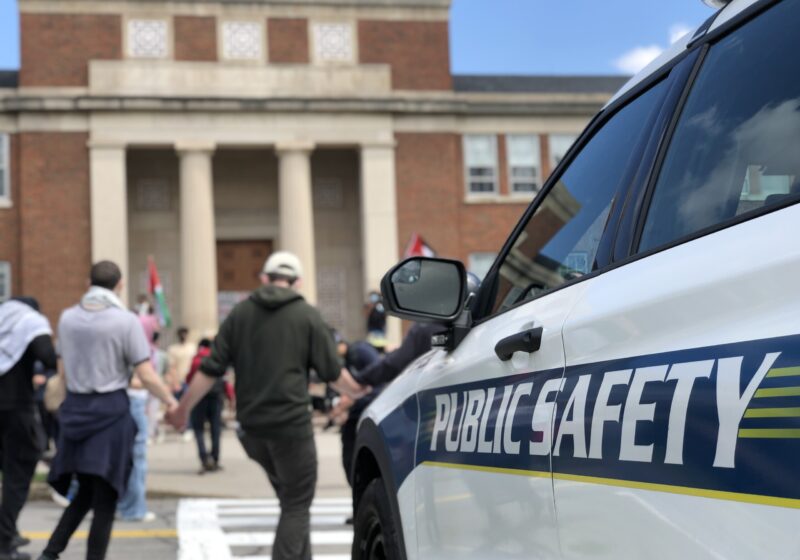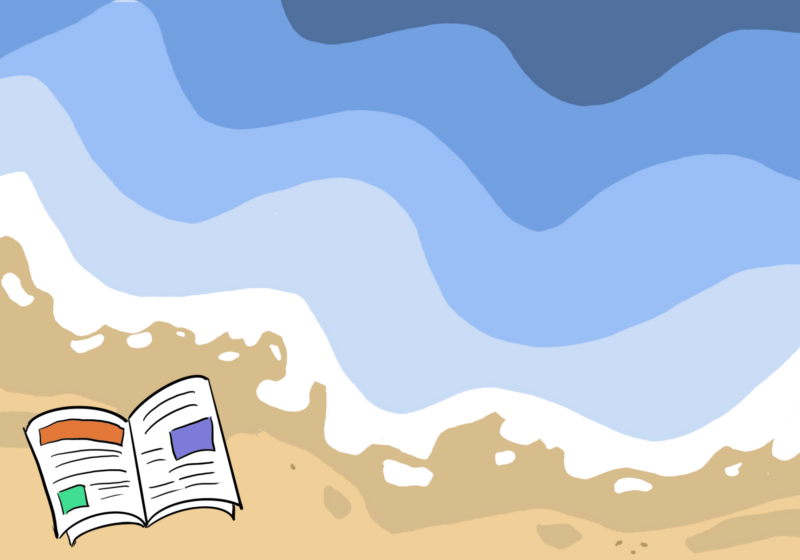 I woke up on May 31 in Istanbul, Turkey. I have lived there my entire life. Though I was home for a few days, I knew this summer was going to be different.
I woke up on May 31 in Istanbul, Turkey. I have lived there my entire life. Though I was home for a few days, I knew this summer was going to be different.
As usual, my day began by checking Facebook. A friend was posting photos of people amassing in Gezi Park, located in Istanbul’s historic city center.
Captions read, “police attack innocent people…tear gas…water cannons.” I wasn’t sure what was going on, so I turned on the TV to check our local (and until then, completely reliable) news channels. I found nothing related to the protests. Was this all a joke? What was actually happening?
The more statuses and updates I saw posted by friends around the city, the more I realized that something unprecedented was occurring. My friends were posting history in the making in real time.
After I dug deeper into the situation, primarily with social media, I realized that my friends were among a large group of environmental activists protesting the demolition of Gezi Park. As one of the last green spaces within this busy and constantly expanding city of nearly 15 million people, it was appalling to discover it was being destroyed to build a mall.
That morning, the Turkish police were ordered to clear out the protestors from the park. They did so by launching an aggressive assault on with tear gas, pepper spray, and water cannon vehicles. Many were arrested and taken in for questioning; many others wounded after being shot with tear gas canisters; more stood their ground, refusing to give into the violence.
It was shocking to know what was going on despite the situation’s absence from the news. They did not broadcast the police brutality. Our revolution would not be televised.
In the following days, more and more people learned of the news and heard about what had been going on through direct communication and social media. Videos showing police brutality against protestors quickly went viral, infuriating the masses. You could hear the anger in the streets as people resorted to banging pots and pans in protest. People even travelled from Asia by crossing the Bosphorus Bridge to support the Gezi Park protestors. Fans from the three major rival soccer teams in Istanbul were united arm-in-arm, marching together for a common goal. Within a couple of days, tens of thousands gathered in Gezi Park and Taksim Square, forcing the police to withdraw.
This was not just about the destruction of trees, greenery, or even a well-known landmark. This was about ignoring the people. This was about the abuse of state power and acts of violence against the people. This was about media censorship and suspended freedom of speech. The people would no longer tolerate these injustices; we wanted a true democracy.
The Turkish government is currently led by the Justice and Development Party. Throughout its 10-year term, its authoritarian control has steadily grown with each arrest or legal proceeding against artists, journalists, and elected officials.
Before the protests, the prime minister had proposed changes to the sale and regulation of alcohol in Turkey. People were concerned that their personal freedoms were at risk.
As the Gezi Park protestors grew in number, the prime minister denounced them, calling them “çapulcu,” meaning marauder or vandal in Turkish. This didn’t stop protestors. In fact, they embraced the phrase. More began gathering in the Turkish capital of Ankara and were met by police opposition within weeks. The protests spread to over 70 cities across Turkey.
I first joined protests on June 2. At first, I was hesitant about becoming involved, but I wanted to be part of history. More importantly, I felt it was my duty to stand up for my rights as a Turkish and American dual citizen.
My mom was especially worried about me going to the park when she saw that I had marked my blood type on my arm in case I was injured. However, I told her I would be home for dinner, and I was. I drove as far into the city with a friend as I could, but I couldn’t get anywhere near Taksim Square or Gezi Park. I decided to take a taxi for the rest of the trek.
The driver, noticing my painter’s mask and goggles (my makeshift teargas protection), asked if I was part of the resistance. He told me that he wasn’t going to charge me for the cab fare after I replied, “Yes.”
My free cab ride was a basic but illustrative example of how people went out of their way to help each other during the protests. An impromptu community had formed in Gezi Park. They accepted and handed out food and water, as well as set up a working infirmary and library. People wrote poems, drew, painted, and performed musical acts including the “Gezi Park Philharmonic Orchestra.”
People in the park were excited to be united, but they were also very much on edge. If someone in the crowd turned too quickly, everyone reacted and turned to see.
I was invited by a friend to a mass-texting group of about 75 people who would communicate news and updates on police positions throughout the city. Because the news channels weren’t showing what was really going on, we had to do our own reporting and news sharing. Throughout the course of the protests, people started getting smart. They started coming up with methods to avoid the tear gas that was fired upon them by teargas canister launchers, or dropped from helicopters into the park. Combinations of lemon, milk, vinegar, and various antacids seemed to actually help neutralize the burn from the clouds of teargas that protesters were exposed to. The more courageous few went as far as using gloves to catch and defuse the tear gas canisters individually by placing and sealing them in barrels filled with water.
One of my favorite signs that I saw while I was in the park translated to “Turkey, you become beautiful when you are angry!”
During another visit to the park, I walked up a road with many barricades along it. In order to keep the police out of the park, the protestors used whatever they could find (sidewalk slabs, scaffolding, vehicles, etc.) to block the roads. I had never seen a real barricade before, and I never thought I would experience Les Misérables in my own backyard. Seeing how a country was able to grow stronger together regardless of the government’s decisions and continuing police brutality was truly a once in a lifetime experience. The use of tear ..gas and water cannons continued throughout most of June, but lessened once the Turkish courts halted the decision on the demolition of the park.
The revolutionary summer really put life into perspective for me. The Turkish government might want to continue business as usual, but the citizens’ continued belief in true democracy will remain strong. Even though things have calmed down, I am anxious to see what will unfold back at home, and I hope our efforts, the people’s efforts, will not be forgotten.
Her yer Taksim, her yer direnis. Everywhere is Taksim, everywhere is resistance.
Embil is a KEY Scholar.

